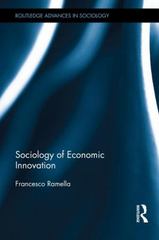Corporate social responsibility is best defined as the process of:
Select one:
a. devising sustainable business practices to meet the non-financial demands of the company's stakeholders.
b. minimizing the company's damage to the environment.
c. assuring that the company has proper governance and compliance procedures.
d. providing value for shareholders.
e. devising sustainable business practices to assure a company's long-term growth.
If Joe Hodge wants to reduce delivery time, which of the following should be used as a KPI?
Select one:
a. Current ratio
b. Order-delivery time
c. Return on equity
d. Customer satisfaction ratings
Which of the following statements is correct?
Select one:
a. Goals are long-term in nature while objectives are short-term in nature.
b. Goals and objectives are both long-term in nature.
c. Goals are short-term in nature while objectives are long-term in nature.
d. Goals and Objectives are both short-term in nature.
A O + 75% 9 This problem set is due Friday, October 28 in Class 1. Impact Evaluation using Regression Discontinuity Mexico City has a very large public school system, which accepts about 300, 000 stu- dents each year. Within that system 16 high schools affiliated with the Instituto Polite- nico Nacional (IPN) are considered to be elite schools. Many parents and students will probably consider that admission to an elite school promises a more successful ex- perience and higher rewards. This may be true, but there is also a substantial risk, especially for the weaker students, that they may fail in that school. And failing to complete high school - even from an elite school - is likely to be a worse outcome than completing a lower level high school. The purpose of the paper "Flourish or Fail? The Risky Reward of Elite High School Admission in Mexico City" (by Alain de Janvry. Andrew Dustan, and Elisabeth Sadoulet ) is to evaluate the rewards and risks of being admitted to one of Mexico City's elite schools. The identification strategy to enable the estimation of a causal effect is based on the admissions system. This is a system whereby . students express their choice (through a selection and ranking of 20 schools they would like to attend). . take an exam at the end of junior high school, and . are admitted in decreasing order from the student with the highest score to the one with the lowest score. Each student is assigned to the most preferred school that has seats available. Consider now the IPN elite schools and all the stuffents that requested admission to these schools. The schools admitted the best students first and then students with descending scores until they filled up all the slots in the schools. Let "cutoff" be the lowest score that they could admit. Students with scores at this level or just above were "barely admitted" while students below this level were "barely rejected" and had to go to a non-elite school. The following table records their dropout rates from high school and for those that did not drop out, their score on the final exam at the end of high school, three years later. (a) Make a graph with the grade at entrance exam and cutoff score for clite school admission on the horizontal axis and dropout rate on the vertical axis. What is the overall relationship between grade at entrance exam and dropout rate? Does it make sense? 2Question#2: [4 Marks] Given the following IP Addresses of Networks. IP Address Subnets to Create 160.240.0.0 104 80.0.0.0 57 225.105.200.0 13 20.0.0.0 71 Create subnets as asked in the table and find the subnet masks after applying subnetting? Question#3: [4 Marks] Calculate checksums of the following numbers for the sender and receiver computes. 1. May 2. June1. Explain what evaluative criteria are in general and how they are used. Then define the criteria discussed in Chapter 6. 2. When is cost-benefit analysis used? How is it done? How is cost-effectiveness analysis different? 3. Define opportunity cost, discount rate, and contingent 1vraluation methods (all related to cost- benefit analysis). 4. How do analysts evaluate risks or potential impact of polio}.r proposals? 5. Explain how forecasting and projections are used in policy analysis. QUESTION 7 Healthy days or quality-adjusted life years (QALYs) are the measurement of output of which economic evaluation method? A. Cost-minimization analysis B. Cost-effectiveness analysis C. Cost-utility analysis D. Cost-benefit analysis QUESTION 8 Economic evaluations provide an objective way to determine resource allocations from an individual, community, or societal viewpoint. True False










